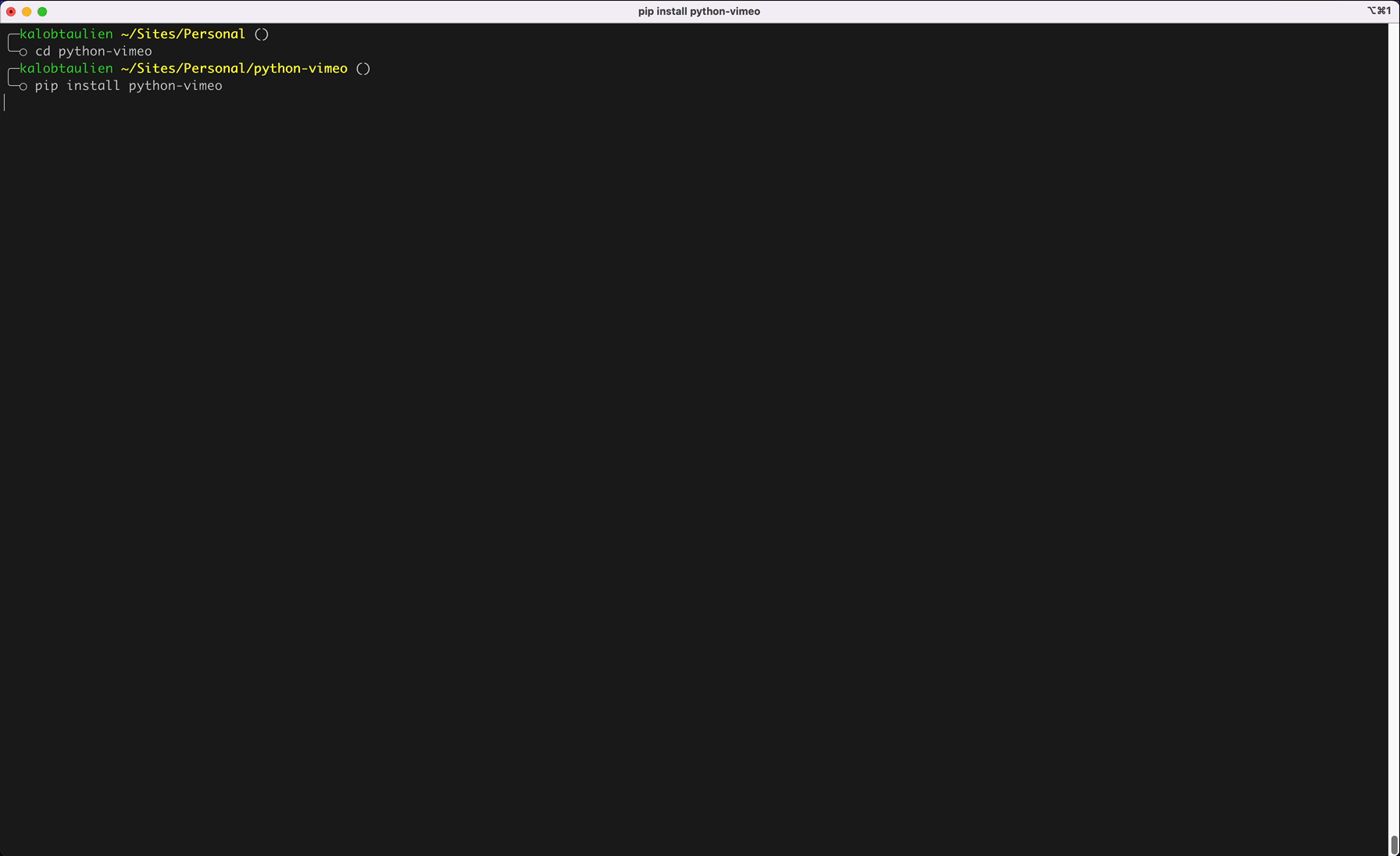This is a wrapper to work with Vimeo's API to extend PyVimeo
- A Vimeo app
- Your Vimeo access token should have all the permissions you need (see the Vimeo API reference for information on which permissions you need)
- An
access_tokenfor most API calls - A
client_idandclient_secretfor uploading images/videos to Vimeo - A
user_idfor creating new Vimeo Folders (ignorable if you aren't working with Folders)
pip install python-vimeofrom python_vimeo.client import Vimeo
vimeo = Vimeo(
access_token=PERSONAL_ACCESS_TOKEN,
client_id=CLIENT_ID,
client_secret=CLIENT_SECRET,
user_id=123456789, # Used for creating folders
)
video = cimeo.get_video("/videos/166593614")
print(video['uri']) # This is the video_uri you'll want to storeTechnically, for this package, all you need is an access_token.
The client_id and client_secret are used for the PyVimeo methods for uploading a picture or a video.
from python_vimeo.client import Vimeo
vimeo = Vimeo(
access_token=PERSONAL_ACCESS_TOKEN,
client_id=CLIENT_ID,
client_secret=CLIENT_SECRET,
)
# Upload a video. You'll want to store the video_uri.
video_uri = vimeo.upload_video('testvideo.mp4', 'My test video')
# Upload a picture
vimeo.upload_picture(video_uri, 'test-picture.png')
# Get a large JSON object with all the information about a video
video_details = vimeo.get_video(video_uri)
# Get just the common information from the get_video() method
details_dict = vimeo.get_common_video_information(video_uri)
# Change the content rating to 'violence', 'drugs', 'language', 'nudity', 'advertisement', 'safe', or 'unrated'
status = vimeo.change_video_content_rating(video_uri, rating='language') # Returns < 300 for healthy responses
# Pull a video from URL and let Vimeo download and transcode it.
video_uri = vimeo.pull_video_from_url('https://website.com/test.mp4', 'My test video')
# Delete a video
status = vimeo.delete_video(video_uri) # Returns 204 if deleted.
# Create a folder
folder_uri = vimeo.create_folder("Hello, folder!")
# Update the folder name
folder_uri = vimeo.update_folder_name(folder_uri, "Updated folder name")
# Add a video to a folder
status = vimeo.add_video_to_folder(folder_uri, ideo_uri) # Returns an int less than 300 as a "positive" response.
# Delete a folder but keep the videos that are in it
folder_uri = vimeo.delete_folder(folder_uri)
# Delete a folder and delete all the videos in it
folder_uri = vimeo.delete_folder(folder_uri, delete_all_videos_in_folder=True)
# Remove a video from a folder
folder_uri = vimeo.remove_video_from_folder(folder_uri, video_uri)
# Tag a video
status = vimeo.tag_video(video_uri, "Testing tag") # Returns an int less than 300 as a positive response
# Remove a tag from a video
status = vimeo.remove_tag_from_video(video_uri, "Testing tag") # Returns an int less than 300 as a positive response
# Add a domain to your video
status = vimeo.domain_whitelist_video(video_uri, 'arbington.com') # Returns an int less than 300 as a positive response